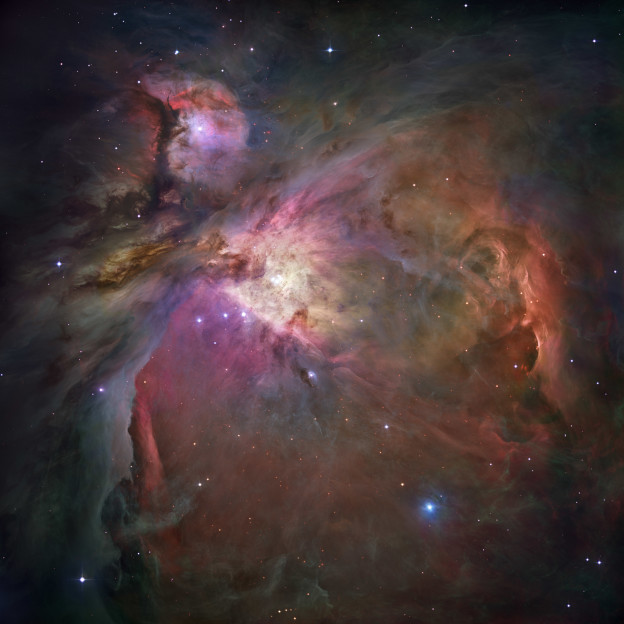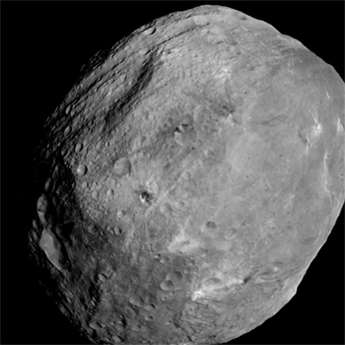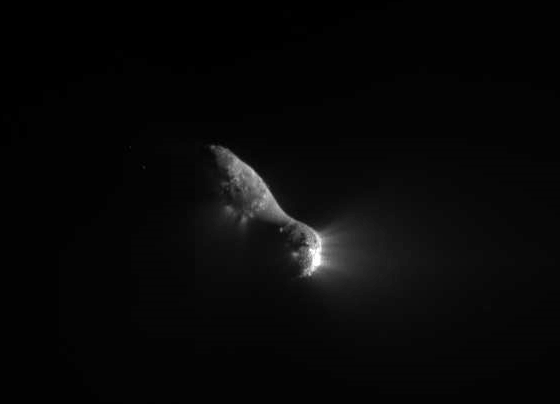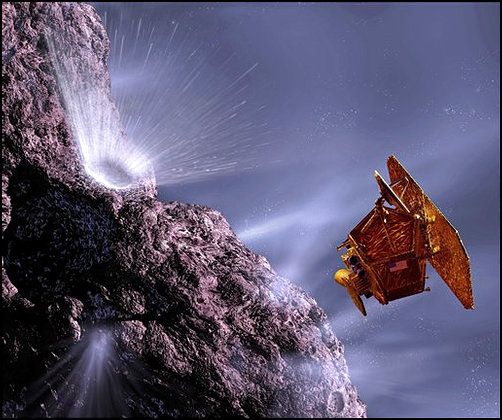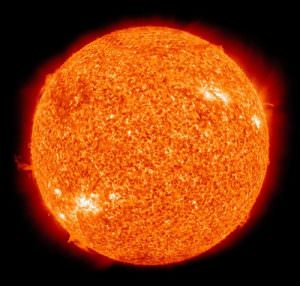Most of us are not aware of the potential threats that can come from deep space. In this post, we will discuss bizarre facts and theories about the vast and eerie cosmos. Although not all space activities are threatening, they are certainly fascinating and can also be very elusive. Some of them may seem like something straight from a science fiction movie.
Over the years, the definition for the term “cosmos” has gotten an additional meaning. Previously, the term was defined as a complex and orderly system in complete harmony. It was originally a Greek word meaning both “order” and “world”. This is because the ancient Greeks had previously thought the world was in perfect harmony and order.
The term “cosmos” now means everything that is in space such as planets, black holes, stars, and even all of the other things we have yet to know about. Thanks to modern technology and human curiosity, we are now aware of the fact that the cosmos are not in harmony. In fact, deep space can be a very hostile environment you definitely don’t want to be in.
It is frightening to think that just one major impact from space can unleash the ultimate Armageddon. We can all be zapped away by deadly space weather. It could be the end of humanity and perhaps all life on Earth. Anything that even crosses the orbit of the Earth can one day slam into it. Here are some extreme and bizarre facts of the eerie cosmos.
The Serious Threat Of Asteroids
Without a doubt, the Blue Planet has taken a lot of beatings in its last 4.54 billion years of existence. It has been hit by space rocks such as meteorites, large asteroids and comets. Thanks to the planet Jupiter, it has acted as a shield and has prevented many of them from entering our atmosphere. Without it, many, if not all forms of life on Earth may not exist. Objects with a high probability of hitting the Earth have low consequences, but objects with a low probability have potentially high consequences.
Although there is no consensus on the exact reason for the extinction of the dinosaurs, most scientists believe it was due to a massive size asteroid or meteorite approximately 65 million years ago. Yes, asteroids can cause massive destruction, but can also do the opposite. Fortunately, because of this massive extinction, scientists believe mammals would have never had the opportunity to evolve. Therefore, humans would probably not even exist. So it looks like we actually owe our existence to asteroids.
An asteroid is a large and irregularly shaped object that orbits the Sun. They are known as “minor planets” because they are made of the same stuff. They are made of metal and rock, but can also contain organic compounds. They come in many different shapes and sizes. Sizes range from small dust particles to massive sizes of close to 600 miles across.
Although the majority orbit planets Jupiter and Mars, there are some that have very strange orbits. Some will pass near the Earth. Meteoroids will frequently enter the Earth’s atmosphere, but are not as big of a threat as an asteroid. Meteors are even less of a threat. Of course, the massive asteroids are the ones we need to watch out for. Scientists are constantly looking out for Near-Earth Objects (NEOs).
How Can We Stop An Asteroid From Hitting Earth?
Scientists are racing to track down potentially catastrophic asteroids. Congress has mandated that NASA will identify at least 90% of potential threat objects (PTO). They currently have several ideas that have high potential to be successful. We will share two of the most talked about below:
1. Shoot It, Or Blow It Up
This plan is actually the least favored. Although it may decrease the size of the asteroid, it may cause even more problems. Shooting or blowing it up will only create more objects that can potentially hit us.
2. Change Its Orbit
This is the most favored plan scientists believe will work successfully. With even a small deflection, the path of the asteroid may just miss us. The technology for this deflection is currently in the works.
The Tunguska Event
A massive meteor that hit Siberia on June 30th of 1908 was considered the largest explosion on Earth in modern human history. Fortunately, due to it hitting a non-populated area, no deaths occurred. However, if it had hit just a few hours later, it would have hit Europe. This could have been a huge catastrophe. If it were to explode mid-air in a major city, it could of killed a million people instantly.
Asteroid Apophis
On Friday the 13th 2029, a large asteroid (the size of 3 1/2 football fields) called “Apophis” is going to come very close to the Earth’s atmosphere. People in the right location can actually observe it with the naked eye.
The asteroid was first discovered in June of 2004 and had previously had a 2.7% chance of hitting Earth. However, after further observations, scientists have ruled out an impact. The large asteroid is expected to come back in 2036. Although this asteroid is likely to not hit the planet, we must continue to watch out for others that can.
The Threat Of A Comet Impact
Comets come from the outer realms of the Solar System such as the Kuiper belt and Oort cloud. They are the left overs of star and planet formations billions of years ago. Asteroids are similar to comets except they don’t have the same visible fuzzy outline and tail. According to NASA, an object is classified as a comet when it contains at least 85% ice.
Thanks to a major discovery in 2005, we now know that they are made out of dust, ice and an amalgamation of rock. On July 4th of 2005, an impactor successfully collided with the nucleus of a comet. The interior showed the comet to be more dusty and less icy than once thought. In August of 2014, there are said to be 5,186 known comets (within the Solar System) and increasing. The number of comets outside the Solar System are likely in the billions or higher.
Why And When Do Comets Have Tails?
When a comet gets near the Sun, its ice will melt and form tails of dust and gas. What we see as a tail is actually just a trail left behind from the vaporized ice of the comet.
The Threat Of A Comet Impact
Comets can and likely already have hit the Earth many times. Comets are said to be more of a threat than asteroids if they were to hit the planet. This is because they travel at much faster speeds, giving us no time to prepare. Their typical speed is 19 to 37 miles per second with asteroids only traveling at 12 miles per second. Even a comet that is smaller than .6 miles across could potentially have enough energy to create a global climate disaster.
Although a comet is more frightening than an asteroid, the probability of it hitting the Earth is low. However, it is a low probability with high consequences. If it slams into Earth with no preparation on our part, it will likely be a similar case to the immense dinosaur extinction.
Perhaps the biggest threat of all space events are asteroid threats. This doesn’t mean we shouldn’t create a plan that can possibly enhance our survival if it were to occur.
The Hot Temper Of The Sun: Solar Storms
Solar storms are strong eruptions of mass and energy from the solar surface. They involve the sudden release of stored magnetic energy that speed up the hot gases near the surface. What happens is these particles can make their way to the Earth by flowing along the Sun’s magnetic field. With the dependence on today’s technology, this could be a huge problem.
When the material collides with the Earth’s magnetic field and trapped radiation belts, it can dump particles into our upper atmosphere while the same charged particles can produce their own magnetic fields. These magnetic fields can modify the Earth’s magnetic field while affecting compass readings. The result of the altered magnetic field can also produce electrical surges in our power grids which will eventually lead to unwanted blackouts.
In 1859, an event known as the Carrington Event took place. It is known as the largest solar storm recorded. If a storm with this magnitude occurred today, there would be many serious problems for humanity. In 1859, very little technology was relied on. Today, we depend on our technology for daily living. There is said to be a 12% chance of this type event happening between 2012 and 2022.
On July 23, 2012 the sun had unleashed two large bursts of charged plasma towards the Earth’s orbit. It was said to be the most powerful space weather seen in over 150 years. The powerful eruption missed the Earth by just a week. If it were to hit the Earth’s magnetic field, strong ground currents could be capable of overloading our electric grids and completely knocking out transformers, satellites and pipelines which would leave many regions without power. This could not only send us back to the 1800s, but can also cause many to be food, water and financial means. The scenario is very frightening to say the least.
What Can We Do To Prevent Another Carrington Event?
Fortunately, businesses and agencies have been designing plans to prevent a possible disaster. If we had an advanced warning, we should be able to enforce our power grids. If we can get at least a 30 minute warning, grid operators could re-dispatch electricity to reduce the flow of current from west to east, which would therefore minimize the grid’s vulnerability to ground currents. Unfortunately, the downside is that the technology to prevent such a disaster is quite pricey.
Luckily, the federal government is paying a lot more attention to this problem than ever before. Grid operations will eventually be required to prepare for a possible event. However, it looks like it may take a few years to strengthen and protect the grid. Only time will tell whether we are prepared for an event capable of putting an end to many lives, while forcing humans to take perhaps many years to gradually put the pieces back together again.
Gamma-Ray Burst
Gamma-Ray Burst: The Biggest Explosion Since The Big Bang
Gamma-Ray Bursts (GRBs) are intense flashes of gamma rays first discovered in the late 1960s by the U.S. Vela nuclear test detection satellites. They are the most energetic forms of light in the cosmos. The bursts of light can last anywhere from a few milliseconds to several minutes. They can emit more energy than the Sun’s entire 10 billion-year lifetime. The bursts will shine 100 times brighter than a typical supernova and about a million trillion times as bright as the Sun. A Gamma-Ray Burst is the biggest known explosion to rock the cosmos since the Big Bang approximately 13.7 billion years ago.
What Causes A Gamma-Ray Burst?
Gamma-Ray bursts are one of the brightest and also the most mysterious events in the cosmos. There are currently several theories to why they happen. One theory suggests they result from the colliding of neutron stars that blow up as supernovae. Another theory suggests they are caused by the merging between a neutron star and a black hole, or between two black holes. The strongest and perhaps the most popular theory is that they are caused from the death of a massive star at least 10 times the mass of the Sun. They may occur from the result of a hypernova. A hypernova explosion can occur when the largest of the the supermassive stars die and collapse to form a black hole. These hypernova explosions can be at least 100 times more powerful than supernova explosions.
How Do We Enhance Our Survival From Gamma-Ray Bursts?
We currently have no defenses for a Gammay-Ray burst. They travel at the speed of light and by the time we to were to detect them, they would have already hit our planet.
If one happens to get close enough to Earth (from 100 light years away), it could end life on our planet. Even if it were to hit 1,000 light-years away, the event can destroy life.
A Scenario Of A Burst Close To Earth
Within our own Milky Way galaxy, a massive star explodes sending a lethal burst of energy towards the planet Earth. This powerful energy would be the equivalent of you standing within just one mile of Hiroshima at any place on Earth. The potent radiation will cook the upper atmosphere and deplete our protective Ozone Layer. Across the world, human beings would burn to death from the powerful radiation that is 100 times the fatal dose.
The vanished Ozone Layer would cause increased temperatures worldwide while triggering cyclones, hurricanes and tsunamis. The majority of life on land and water will incinerate. These peculiar beams of radiation may have wiped out many civilizations within the cosmos. Although gamma-ray burst are a very eerie event, no need to lose sleep over it. There is only a 1 percent chance of one ever hitting the Earth over the entire course of its lifetime.
Black Holes And Beyond
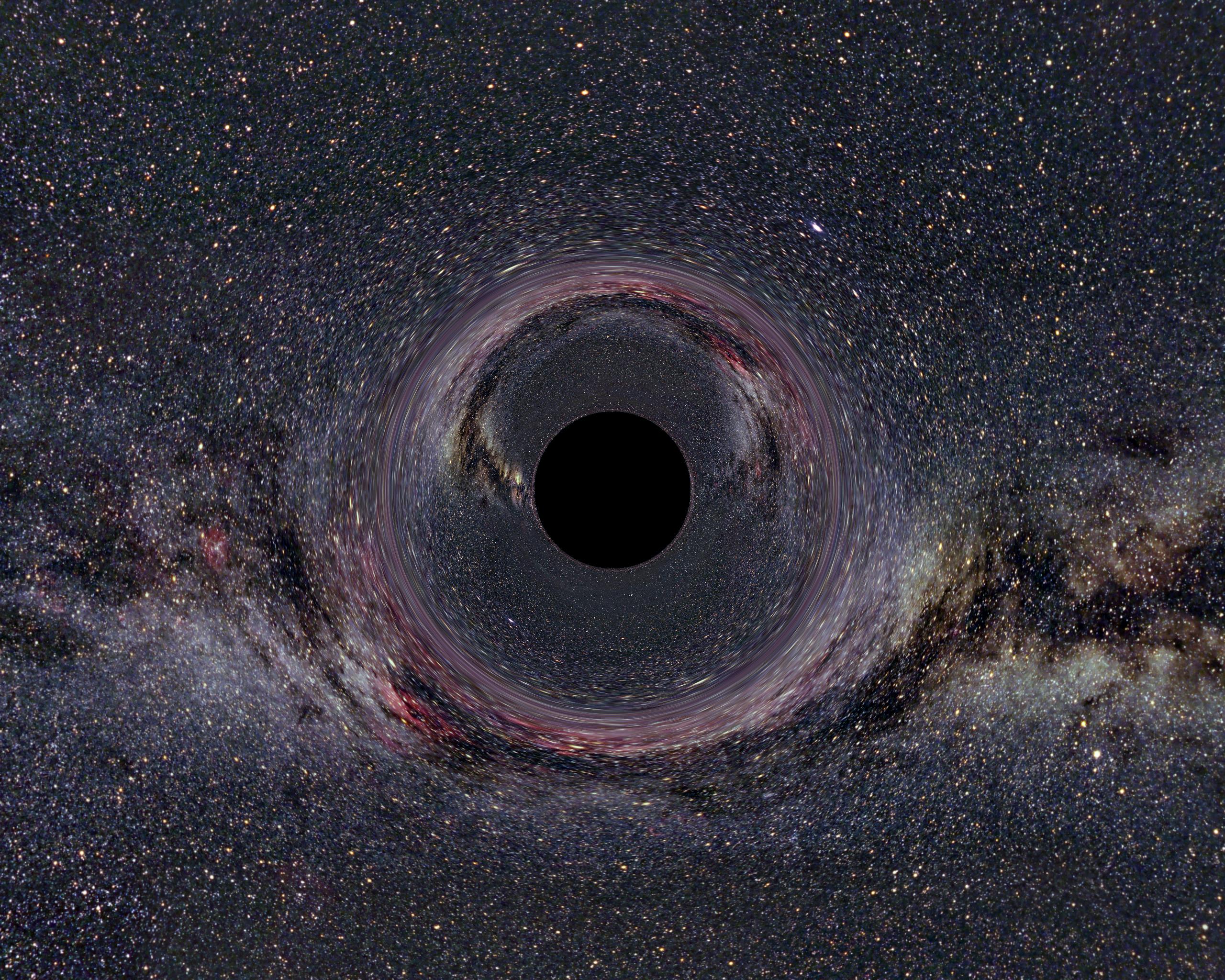
A simulated Black Hole (Milky Way Galaxy is in the background) of ten solar masses as seen from a distance of 600km.
“Black Hole Milkyway” by Ute Kraus, Physics education group Kraus, Universität Hildesheim, Space Time Travel, (background image of the Milky Way: Axel Mellinger) is licensed under CC BY-SA 2.0 DE and CC BY-SA 2.5
A black hole is a space where gravity pulls so much that even light can’t get out. The gravity is so strong because matter has been squeezed into a tiny space. This usually happens when a star is dying. Black holes can come in various sizes. The smallest can be the size of an atom with the mass of a large mountain. The larger ones are called “steller” black holes with the mass of up to 20 times more than the Sun. The largest are called “supermassive” black holes with the mass of more than 1 million suns put together.
Scientists have found proof that every large galaxy has a supermassive black hole located at its center. In our Milky Way galaxy, we have a supermassive black hole called a Sagittarius A with the mass of around 4 million suns capable of holding a few million Earths.
Are Black Holes A Threat To Our Precious Planet?
Fortunately, the Earth is not threatened from a black hole. This is because there is no black hole close enough to the Solar System. Even if a black hole (the mass of the sun) were to come close to the Earth taking place of the Sun, the Earth (as well as the other planets) would not fall in it, it would just orbit it.
Another Interesting Fact About Black Holes: It is impossible for the Sun to turn into a black hole. This is because the size of the Sun is just too small to make one.
What Are White Holes?
A white hole is the theorized time reversal of a black hole in astrophysics and cosmology. They are the opposite of black holes. Unlike black holes, no matter or light can enter the region of the white hole. While black holes attract matter, a white hole ejects matter. Scientists assume that since black holes do exist, then it is possible to reverse the process.
However, many scientists are skeptical and believe it is just in the theory of black holes, but is not physically possible. Physicist Stephen Hsu stated the the reason we currently do not have the evidence of white holes is because their existence is unstable and they would explode way before we even get the chance to detect them. Perhaps, with more advanced tools we will be able to find more answers in the years to come.
Watch the footage above to see Stephen Hawking (one of the most brilliant minds of today) and other scientists as they discuss some of the most mysterious questions about black holes and beyond. What was once just bizarre science fiction, has now become reality.
The Final Collapse Of The Cosmos: The Big Rip
The Big Rip is a hypothesis that says the Universe will continue to expand and accelerate, but will also eventually rip everything apart as it does so. In the late 1920s, scientists had first realized the Universe is expanding. Scientists used to believe the Universe would eventually reach a point of maximum expansion. American astronomer Edwin Hubble discovered the expansion with a 100-inch Hooker Telescope. Scientists now believe that dark energy is the main culprit of this extremely fast expansion of the Universe.
A Strange Scenario Of The Big Rip: The Ultimate Apocalyptic Event
If The Big Rip were to happen today, by the time Earth is dealt with, every atom in your body would quickly spread apart and fly off into infinity and you wouldn’t even know it. Scientists predict it would take only an hour to rip the Earth apart. This is a bizarre event we don’t need to worry about. The Big Rip is expected to climax around 50 billion years from now.
Are There Multiple Universes?
Some scientists believe The Big Rip may just apply to our own Universe, but what about others? Are there other Universes out there besides ours? Many believe we live in a universe amongst an infinite number of others. Scientists call this a “multiverse.”
Conclusion: We will probably never get the answers to all the mysteries of the cosmos, but scientists are not going to stop trying. We do know one thing is certain, something will eventually terminate the Earth and knock everything out of existence. It is just a matter of time before this dreaded day will come. As previously mentioned, anything that happens to cross the orbit of the Earth can one day slam right into it, and this could mean the ultimate ending to life as we know it. As technology continues to increase, we will discover many more bizarre facts about the cosmos.
What is extremely important now is that scientists take these threats very seriously. We are already aware of all the possible disasters that can come our way, but are we willing to take the steps to prevent it? Of all the other threats to life, asteroids should be put towards the top of the list. Although we may not be able to stop the powerful energy of Gamma-Ray Bursts or prevent a comet from crashing into our planet, we can avert an asteroid. If the dinosaurs were wiped out from an asteroid impact, they obviously couldn’t prevent their mass extinction, but humans can.

